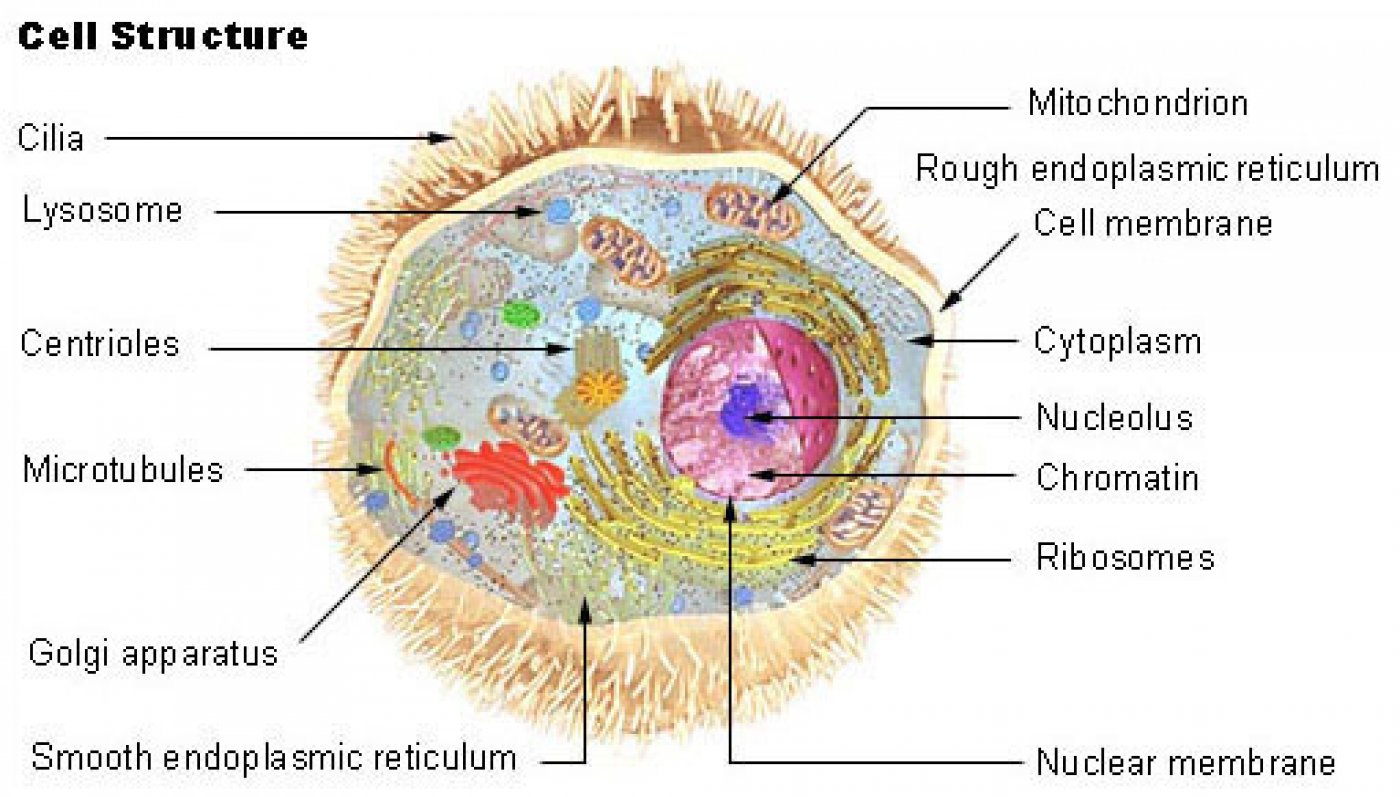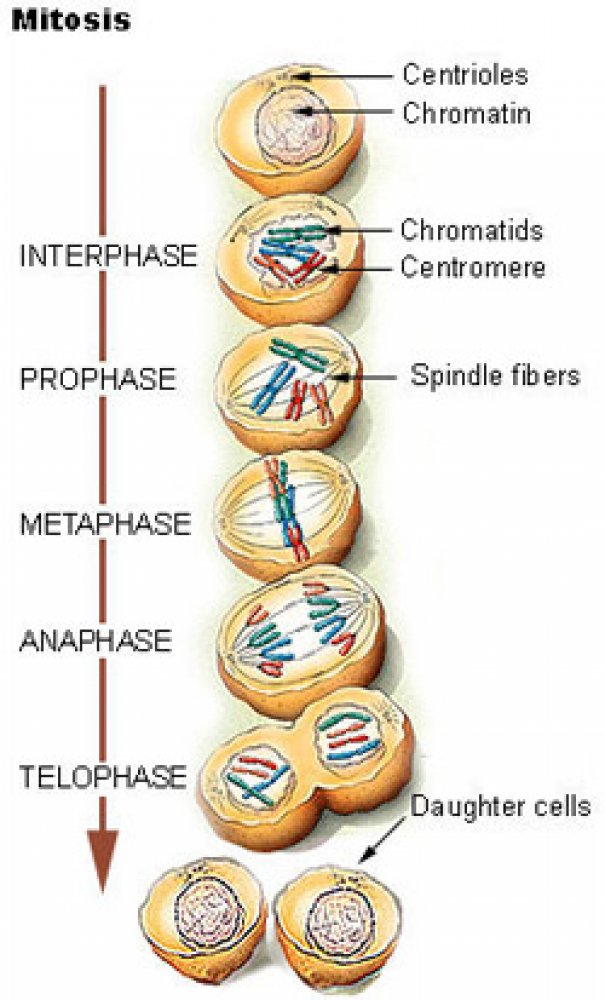
Remix of Cell Structure & Function
Lesson by Help@Learnful · 5 years ago ·
Instructional Summary
This section provides detailed information about cell structure and function, four basic types of tissue in the human body, and the different types of membranes found in the body.Content Blocks
Cell Structure & Function
Cells, the smallest structures capable of maintaining life and reproducing, compose all living things, from single-celled plants to multibillion-celled animals. The human body, which is made up of numerous cells, begins as a single, newly fertilized cell.
Almost all human cells are microscopic in size. To give you an idea how small a cell is, one average-sized adult body, according to one estimate, consists of 100 trillion cells!
This is a change I've made.
Cell Structure
Ideas about cell structure have changed considerably over the years. Early biologists saw cells as simple membranous sacs containing fluid and a few floating particles. Today's biologists know that cells are infinitely more complex than this.
There are many different types, sizes, and shapes of cells in the body. For descriptive purposes, the concept of a "generalized cell" is introduced. It includes features from all cell types. A cell consists of three parts: the cell membrane, the nucleus, and, between the two, the cytoplasm. Within the cytoplasm lie intricate arrangements of fine fibers and hundreds or even thousands of miniscule but distinct structures called organelles.
Cell membrane
Every cell in the body is enclosed by a cell (Plasma) membrane. The cell membrane separates the material outside the cell, extracellular, from the material inside the cell, intracellular. It maintains the integrity of a cell and controls passage of materials into and out of the cell. All materials within a cell must have access to the cell membrane (the cell's boundary) for the needed exchange.
The cell membrane is a double layer of phospholipid molecules. Proteins in the cell membrane provide structural support, form channels for passage of materials, act as receptor sites, function as carrier molecules, and provide identification markers.
Nucleus and Nucleolus
The nucleus, formed by a nuclear membrane around a fluid nucleoplasm, is the control center of the cell. Threads of chromatin in the nucleus contain deoxyribonucleic acid (DNA), the genetic material of the cell. The nucleolus is a dense region of ribonucleic acid (RNA) in the nucleus and is the site of ribosome formation. The nucleus determines how the cell will function, as well as the basic structure of that cell.
Cytoplasm
The cytoplasm is the gel-like fluid inside the cell. It is the medium for chemical reaction. It provides a platform upon which other organelles can operate within the cell. All of the functions for cell expansion, growth and replication are carried out in the cytoplasm of a cell. Within the cytoplasm, materials move by diffusion, a physical process that can work only for short distances.
Cytoplasmic organelles
Cytoplasmic organelles are "little organs" that are suspended in the cytoplasm of the cell. Each type of organelle has a definite structure and a specific role in the function of the cell. Examples of cytoplasmic organelles are mitochondrion, ribosomes, endoplasmic reticulum, golgi apparatus, and lysosomes.
Cell Function
The structural and functional characteristics of different types of cells are determined by the nature of the proteins present. Cells of various types have different functions because cell structure and function are closely related. It is apparent that a cell that is very thin is not well suited for a protective function. Bone cells do not have an appropriate structure for nerve impulse conduction. Just as there are many cell types, there are varied cell functions. The generalized cell functions include movement of substances across the cell membrane, cell division to make new cells, and protein synthesis.
Movement of substances across the cell membrane
The survival of the cell depends on maintaining the difference between extracellular and intracellular material. Mechanisms of movement across the cell membrane include simple diffusion, osmosis, filtration, active transport, endocytosis, and exocytosis.
Simple diffusion is the movement of particles (solutes) from a region of higher solute concentration to a region of lower solute concentration. Osmosis is the diffusion of solvent or water molecules through a selectively permeable membrane. Filtration utilizes pressure to push substances through a membrane. Active transport moves substances against a concentration gradient from a region of lower concentration to a region of higher concentration. It requires a carrier molecule and uses energy. Endocytosis refers to the formation of vesicles to transfer particles and droplets from outside to inside the cell. Secretory vesicles are moved from the inside to the outside of the cell by exocytosis.
Cell Division
Cell division is the process by which new cells are formed for growth, repair, and replacement in the body. This process includes division of the nuclear material and division of the cytoplasm. All cells in the body (somatic cells), except those that give rise to the eggs and sperm (gametes), reproduce by mitosis. Egg and sperm cells are produced by a special type of nuclear division called meiosis in which the number of chromosomes is halved. Division of the cytoplasm is called cytokinesis.
Somatic cells reproduce by mitosis, which results in two cells identical to the one parent cell. Interphase is the period between successive cell divisions. It is the longest part of the cell cycle. The successive stages of mitosis are prophase, metaphase, anaphase, and telophase. Cytokinesis, division of the cytoplasm, occurs during telophase
Meiosis is a special type of cell division that occurs in the production of the gametes, or eggs and sperm. These cells have only 23 chromosomes, one-half the number found in somatic cells, so that when fertilization takes place the resulting cell will again have 46 chromosomes, 23 from the egg and 23 from the sperm.
DNA replication and protein synthesis
Proteins that are synthesized in the cytoplasm function as structural materials, enzymes that regulate chemical reactions, hormones, and other vital substances. DNA in the nucleus directs protein synthesis in the cytoplasm. A gene is the portion of a DNA molecule that controls the synthesis of one specific protein molecule. Messenger RNA carries the genetic information from the DNA in the nucleus to the sites of protein synthesis in the cytoplasm.
Hands On Exercise
Exercise A: Drag and drop the correct labels for the plant cell below. Multiple attempts are allowed.
Exercise B: Drag and drop the correct labels for the animal cell below. Multiple attempts are allowed.
Collaborators
Edmonton, AB
License
Remix of Cell Structure & Function by Help@Learnful, Samantha James is licensed under a Creative Commons Attribution License (CC BY), except where otherwise noted. A derivative from the original work. A remix of Cell Structure & Function.





Comments
Be the first to comment!